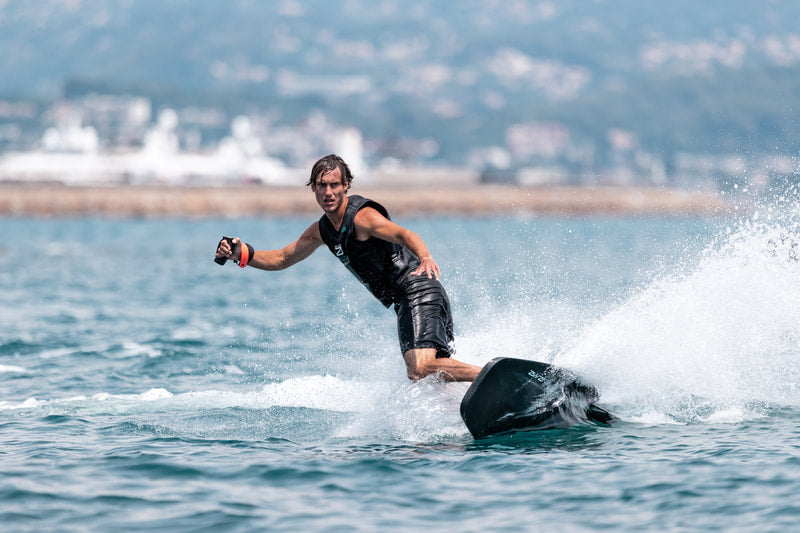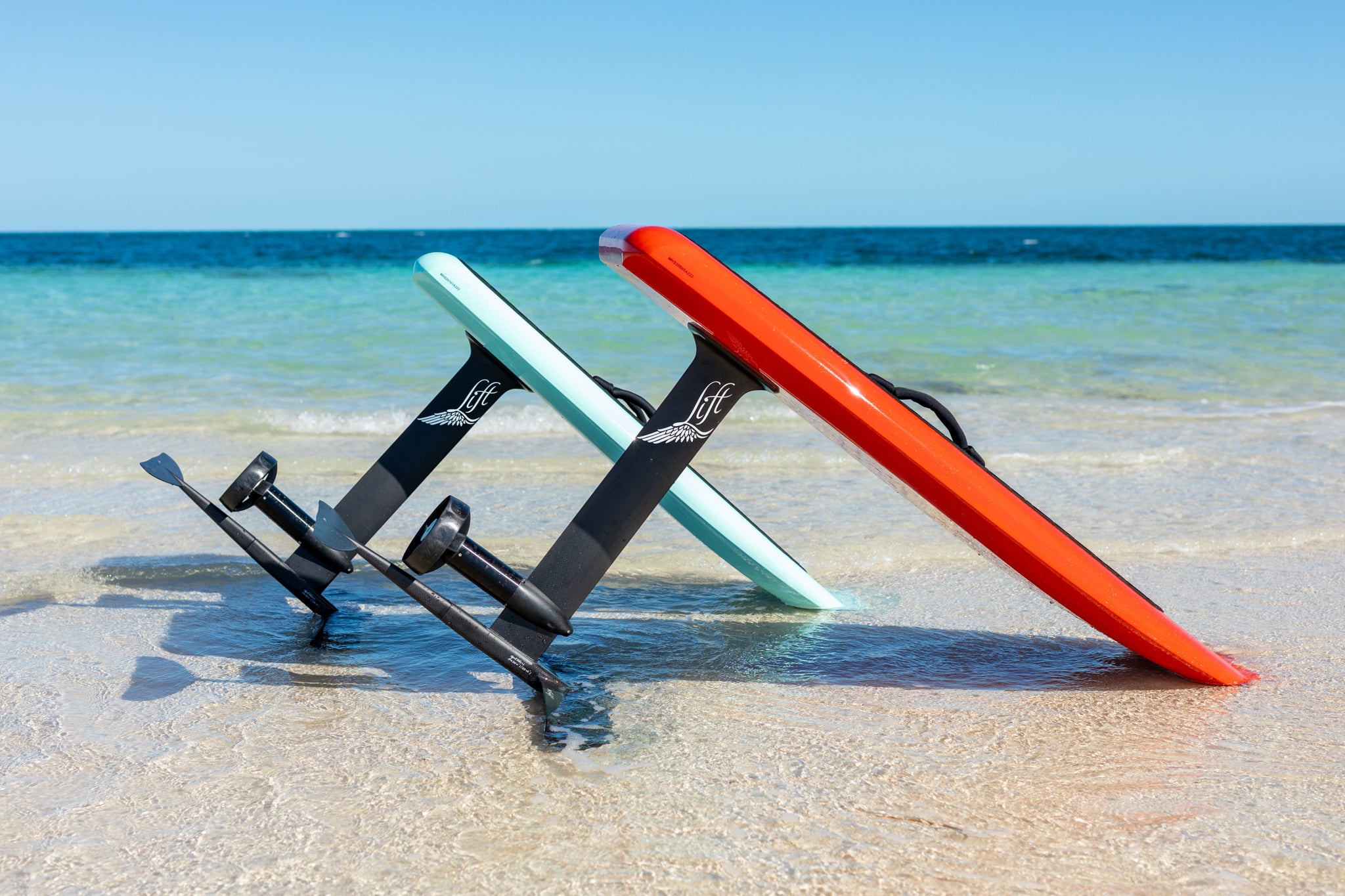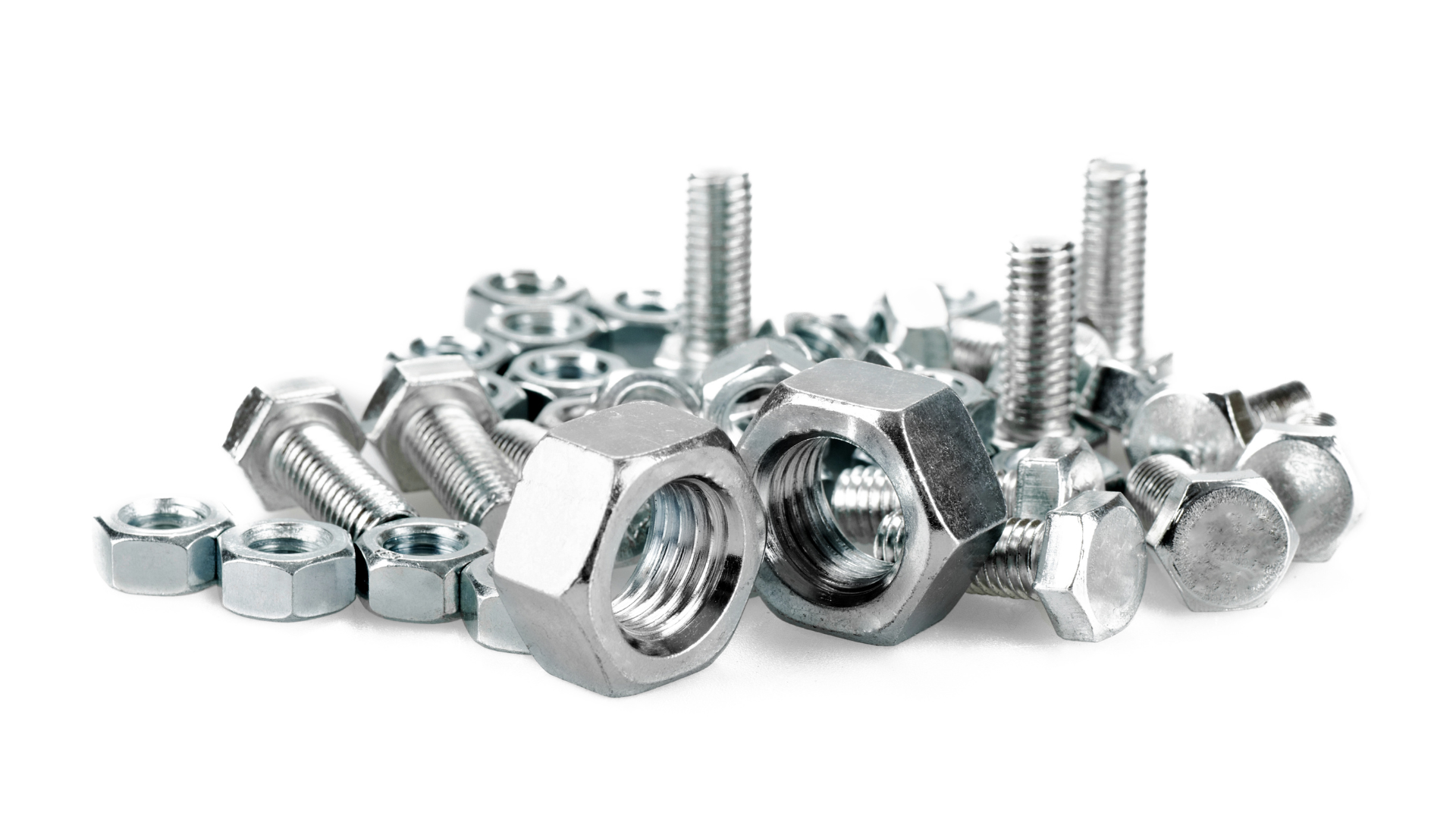Hydrofoil wings are an innovative technology that has been used in a variety of applications, including boats, eFoils, surfboards/jetboards, and even bikes. Hydrofoil wings work by creating lift when moving through water, allowing the vehicle or object to "fly" above the surface of the water.

There are two main types of hydrofoil wings: high aspect and low aspect. In this blog post, we will compare high aspect and low aspect hydrofoil wings, detailing their strengths and weaknesses.

High Aspect Wings
High aspect hydrofoil wings have a long, slender shape, with a high aspect ratio (the ratio of the length of the wing to its width). These wings are designed to create lift at relatively high speeds, and are often used in racing or high-performance applications. One of the main strengths of high aspect hydrofoil wings is their efficiency. Because they are long and slender, they experience less drag, which means they require less power to maintain a given speed. This makes them ideal for use in fast boats or other high-speed applications.
However, high aspect hydrofoil wings also have some limitations. Because they are designed for high-speed operation, they may not perform as well at slower speeds. In addition, because of their slender shape, they may be more prone to bending or breaking under stress.
Low Aspect Wings
Low aspect hydrofoil wings, on the other hand, have a shorter and wider shape, with a lower aspect ratio. These wings are designed to create lift at slower speeds, and are often used in recreational or utility applications. One of the main strengths of low aspect hydrofoil wings is their stability. Because they are shorter and wider, they are less prone to bending or breaking under stress, which makes them ideal for use in recreational boats or other applications where reliability is important.
However, low aspect hydrofoil wings also have some limitations. Because they are designed for slower speeds, they may not be as efficient as high aspect wings. In addition, because of their shorter and wider shape, they may experience more drag, which means they require more power to maintain a given speed.
In conclusion, high aspect and low aspect hydrofoil wings each have their own strengths and weaknesses. High aspect wings are more efficient and are ideal for high-speed applications, while low aspect wings are more stable and are ideal for slower, recreational applications. Ultimately, the right choice will depend on the specific needs and requirements of the application.
The bigger the back wing, the more stable
the longer the fusalage goes the more pitch stability you have.
Surf behind the boat, rip turns. - more curved and lower aspect
Breakdown By Sport:
Kite Foiling
Lots of speed and power allows you to use lower aspect wings. little less lift
Wake Foiling
Wing Foiling
eFoiling
Tow Foiling / Surfing
High aspect
Lower Aspect Super Carvy
Interchangeability
Shop Wing Foils






Leave a comment
This site is protected by reCAPTCHA and the Google Privacy Policy and Terms of Service apply.